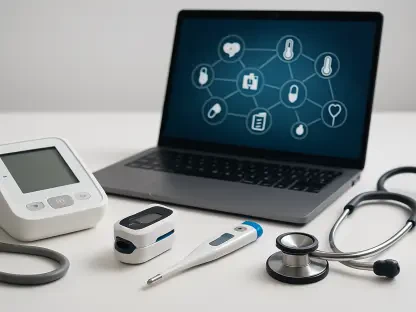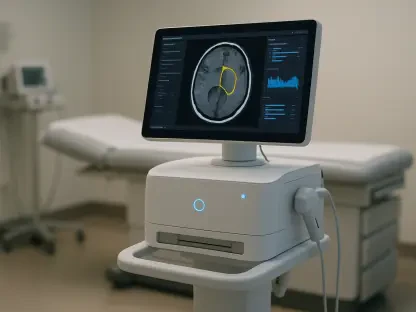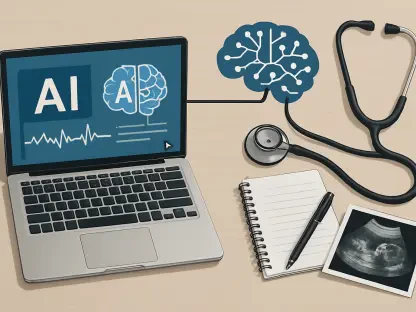In the past two years, investment in digital health solutions has markedly increased as stakeholders, including health plans, employers, and health systems, seek to enhance patient outcomes while reducing costs. A recent Peterson Health Technology Institute survey highlights this growth. However, ensuring that this surge translates into tangible benefits for patients and payers demands more than just funding—it requires well-crafted, evidence-backed policies.
Digital health solutions have garnered significant attention and investment over the past two years, with stakeholders across various sectors seeking to leverage technology to improve health outcomes and optimize costs. This surge is partly driven by a newfound emphasis on remote health services during the COVID-19 pandemic. The Peterson Health Technology Institute’s recent survey underscores this upward trend, reflecting a broader movement towards digitized healthcare. Despite substantial investment, achieving tangible value from remote patient monitoring (RPM) requires more than just financial input. Smart policies are requisite for translating this investment into real benefits. This explainer examines how expert-driven strategies can maximize the value derived from RPM.
Focusing on the Right Patients
Digital health solutions promise substantial improvements but are often most effective when targeted at specific patient groups. Not all RPM services equally benefit all conditions, evidenced by studies on heart failure, where broad applications showed no clinical benefit compared to standard care. However, certain subgroups, like those with mild depression or prior heart failure events, did benefit. Personal accounts further illustrate the value of thoughtfully applied RPM, such as individuals with congestive heart failure and preeclampsia receiving enhanced care and avoiding hospital visits through monitored interventions. These examples highlight the importance of identifying and targeting the right patient demographics to maximize the effectiveness of RPM.
By focusing on the right patient demographics, RPM can have a significant impact on patients’ health. For instance, individuals with mild depression or pre-existing conditions like heart failure benefited substantially from RPM, enabling them to receive continuous monitoring and timely interventions. Tailoring RPM solutions to the specific needs of these patient groups can result in considerably better care outcomes, reduce hospital admissions, and ultimately lower healthcare costs. The challenge lies in identifying the right patient groups and understanding their unique needs to tailor RPM programs that deliver the most benefit.
Implementation Challenges and Solutions
Effective implementation of RPM is multifaceted, requiring patient engagement, seamless data transmission, and prompt response to abnormal readings. Programs need to integrate RPM data into electronic health records (EHR) effectively and set up automatic reminders and alerts to support continuous monitoring and timely medical intervention. Collaboration between primary care providers and virtual teams has shown to improve outcomes, particularly in remote blood pressure monitoring. This collaborative approach ensures that patients receive timely and appropriate care based on their monitored data, enhancing the overall effectiveness of RPM programs.
One of the critical challenges in successfully implementing RPM is ensuring patients are engaged and adhere to the prescribed technology. This engagement can be bolstered by simplifying device usability and providing clear instructions to users. Moreover, ensuring seamless data transmission and real-time alerts enables healthcare providers to respond promptly to any abnormal readings, preventing potential complications. The integration of RPM data into EHR systems allows for comprehensive patient records, facilitating better decision-making and continuity of care. Programs must also incorporate automatic reminder systems to encourage patients to use monitoring devices consistently.
CMS Role in Promotion
CMS can enhance RPM efficacy by linking Medicare reimbursements to EHR integration and offering technical assistance to providers for establishing robust monitoring protocols. By incentivizing proper implementation practices, CMS can help ensure that RPM programs are both effective and sustainable. This can involve creating standard guidelines for RPM data integration and supporting providers with the necessary tools and training to adopt these practices effectively. By doing so, CMS can foster a more streamlined and efficient RPM ecosystem, promoting better patient outcomes and more sustainable healthcare practices.
By addressing these implementation challenges head-on and fostering cooperation between various stakeholders, the healthcare sector can realize RPM’s full potential. Supporting providers with technical assistance, ensuring seamless integration with EHR systems, and implementing robust monitoring protocols are steps in the right direction. Engaged patients and well-coordinated provider teams are crucial for maximizing the benefits derived from RPM, resulting in improved patient care and reduced healthcare costs.
Reducing Provider Adoption Barriers
Setting up RPM services demands considerable investments in devices, technology infrastructure, and adapting care workflows, often difficult for underfunded facilities, especially rural ones. Medicare’s reimbursement policies currently don’t account for these challenges. Since the introduction of RPM codes in 2019, the average reimbursement has decreased, creating financial disincentives.
Geographic adjustments further reduce reimbursements for rural providers, discouraging national companies from offering RPM in these areas. This disparity in reimbursement rates creates significant barriers to the widespread adoption of RPM, particularly in underserved regions. To overcome these hurdles, policymakers must consider the financial realities of healthcare providers and ensure that reimbursement structures reflect the true costs of implementing RPM services. Adequate funding and support can significantly enhance RPM adoption across diverse healthcare settings.
Reimbursement Reform Suggestions
Eliminate geographic adjustments for digital tools to ensure uniform costs across regions. Simplify billing processes and ensure reimbursement levels adequately support the required resources. Aligning RPM services with risk-based models such as bundled payments or partial capitation could naturally incentivize effective patient targeting and high-value applications. Such reforms will create a more equitable landscape for RPM implementation, promoting its adoption even in rural and underserved areas. By removing financial barriers and simplifying administrative processes, healthcare providers will be better positioned to offer RPM services broadly.
Reforming reimbursement policies to support RPM is essential for widespread adoption and success. Ensuring uniform reimbursement standards across regions and removing geographic adjustments can help level the playing field for all providers. Simplifying billing processes and providing adequate funding will alleviate administrative burdens, enabling healthcare providers to focus on patient care. Risk-based reimbursement models incentivize providers to target high-need patients and deliver high-value care, ultimately enhancing the effectiveness and reach of RPM services.
Federal Oversight and Evidence Generation
Continuous data collection and research are critical for enhancing RPM usage and outcomes. A recent OIG report identified gaps in CMS’s current data collection, complicating effective oversight. Medicare’s lack of detail regarding the types of RPM devices used and health data collected, combined with insufficient identification of providers involved, poses oversight challenges. “Incident to” billing practices obscure service quality monitoring and can lead to fraud. These gaps highlight the need for more detailed and transparent data collection practices to facilitate better oversight and evaluation of RPM programs.
Enhancement Proposals
CMS should require detailed RPM claims, including health data types and devices used. Ensure that providers eligible for direct Medicare billing submit claims under their identification rather than using “incident to” billing. By improving data collection and oversight, policymakers can better understand the impact of RPM and make informed decisions to enhance its effectiveness. Detailed claims data will provide valuable insights into the usage and outcomes of different RPM devices and applications, enabling policymakers to identify best practices and areas for improvement.
Enhancing federal oversight and data collection will strengthen RPM programs, ensuring they deliver intended benefits. Detailed and transparent data collection practices will enable better monitoring of RPM applications, aiding in the identification of successful interventions and areas needing improvement. Policymakers can use this data to refine guidelines and support providers in implementing best practices, optimizing the overall effectiveness of RPM in healthcare delivery.
Synthesis and Recommendations
The potential of RPM to revolutionize healthcare delivery hinges on smart policies that address specific patient needs, ensure robust and systematic implementation, remove adoption barriers for providers, and enhance federal oversight with comprehensive data collection. Policymakers can unlock the full value of RPM by adopting focused strategies targeting these critical areas. By targeting high-need patients, supporting sound implementation, reducing barriers, and prioritizing federal oversight, policymakers can ensure that RPM not only lives up to its promise but also delivers substantial, measurable benefits to both patients and payers.
This approach requires a nuanced and data-driven policy framework to effectively harness the potential of RPM in revolutionizing healthcare delivery for improved patient outcomes and optimized costs. Through such thoughtful policy interventions, RPM can indeed become a cornerstone of modern healthcare practice. By adopting these strategies, policymakers can create a supportive environment that fosters the effective implementation and widespread adoption of RPM, ultimately transforming healthcare delivery and enhancing patient care across diverse settings.









